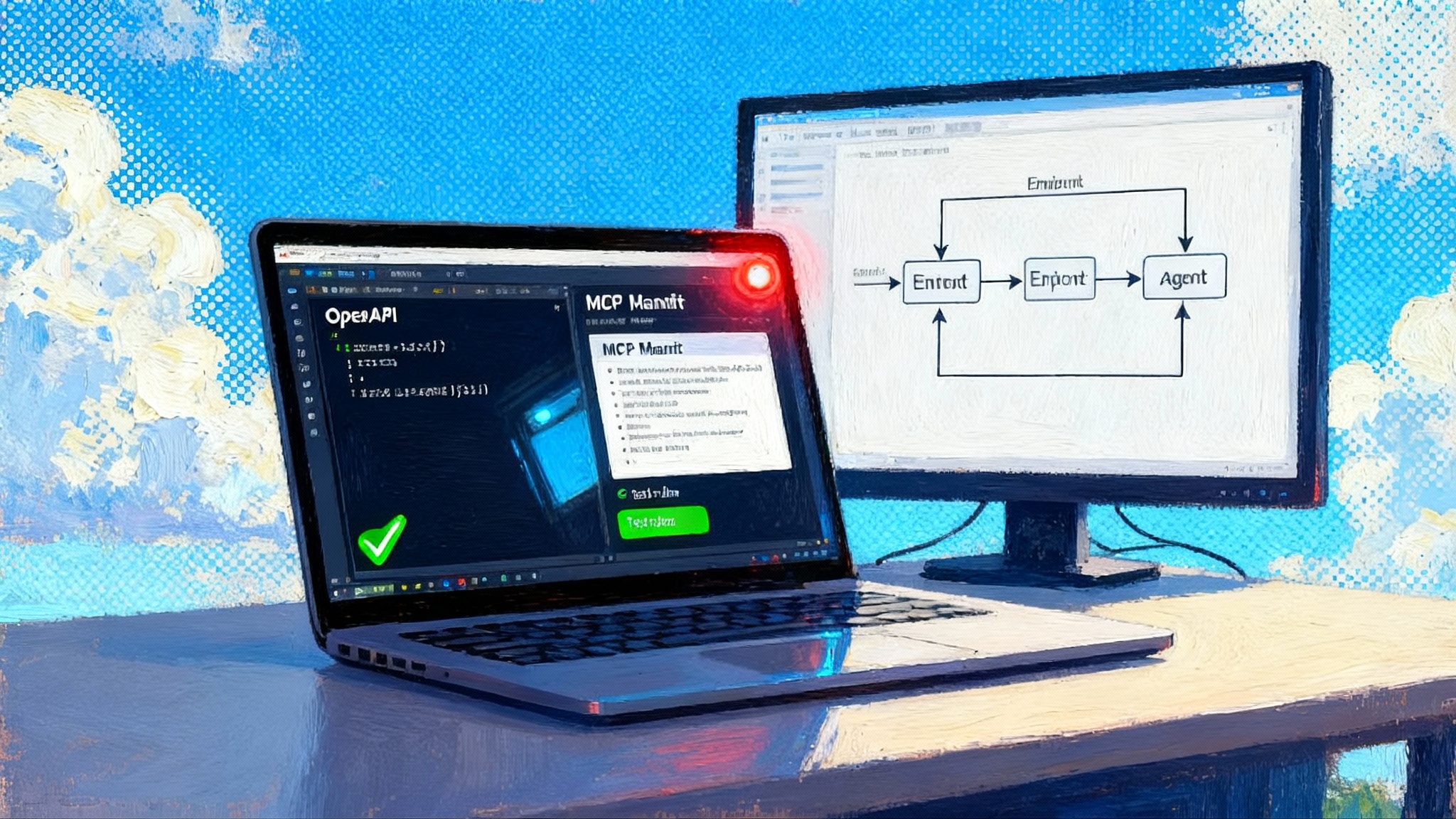Decagon Voice 2.0 and AOP Copilot turn voice into revenue
Decagon’s late September launch pairs Voice 2.0 latency cuts, cross channel memory, and AOP Copilot. Here is what changed, why reliability finally crossed the line, and how to ship a revenue ready agent in Q4.

Breaking news: voice agents just crossed the reliability line
For a decade, voice automation promised relief and mostly delivered hold music. That changed in the last week of September. On September 24 and 25, 2025, Decagon introduced Voice 2.0, a package of upgrades that cuts generation latency, adds cross channel memory, and brings real telephony polish to AI conversations. The headline is not another flashy demo. It is that production voice agents now feel reliable enough to carry revenue, not just deflect calls.
You can trace that claim to measurable shifts: faster first words, fewer awkward pauses, sturdier interruption handling, and behavior that stays consistent across channels. Decagon’s own notes outline the core advances and a reported 65 percent latency reduction in clear detail. If you want the technical flavor, the company’s write up on the topic is worth a scan: Decagon Voice 2.0 technical notes.
If you lead customer experience, support, or sales, the practical question is simple. Should you ship a real voice agent in Q4 2025? The new answer is yes, if you pick your scope, prove reliability with simulations before go live, and instrument the right performance and revenue metrics from day one. Below is what actually changed, why it matters right now, and a pragmatic build versus buy playbook to get to production without gambling your brand.
What is technically new in Voice 2.0
Think of a modern voice agent as a relay team. Speech recognition, language understanding, decision logic, and speech generation each hand the baton in milliseconds. Most breakdowns happen in the handoffs. Voice 2.0 focuses on those handoffs and the controls around them.
-
Lower end to end latency: The time from a customer finishing a sentence to the agent starting a relevant answer has dropped enough to feel conversational rather than turn based. People measure machines in human units. If a friend pauses too long before answering, you notice. If an agent responds within human timing, you relax and keep talking.
-
More natural prosody while streaming: Responses arrive in a smooth cadence with clearer rhythm and emphasis. You hear fewer robotic inflections and fewer filler crutches like “um” and “uh.” The result is not just pleasant; it is functional. Clear emphasis reduces repeat requests and the rephrasing spiral that drives up handle time.
-
Cross channel memory: The agent carries context from chat to voice to text. A customer who starts with a billing question in chat can finish on a call without repeating the account number, last action taken, or reason for contact. This is what most enterprises meant by omnichannel for years, now finally visible in the default experience. For a broader view of why shared state is becoming foundational to agents, see our take on the memory layer moment.
-
Telephony grade experience: The agent handles barge in gracefully, stays coherent when the customer changes direction mid sentence, navigates background noise, and transfers to a human with a crisp summary when needed. It can continue over text after a call for tasks like sending a link or a one time code. None of this is flashy. All of it is what makes or breaks a real call.
-
Brand safe controls: The logic that governs what the agent can say and do is explicit, testable, and reviewable. In Decagon’s design that logic lives in Agent Operating Procedures, explained below, with guardrails for high risk actions such as identity verification, refunds, and compliance disclosures.
-
Pre deployment simulations: Teams can generate realistic test conversations with defined personas, intents, and conditions, then score whether the agent selected the right operating procedure, followed policy, and stayed on tone. This is the difference between “we tried some scripts” and “we know what will happen under pressure.” For specifics on how these tests work, Decagon offers a clear primer: Decagon simulations overview.
A quick primer on Agent Operating Procedures and Copilot
Agent Operating Procedures, or AOPs, are to AI agents what playbooks are to humans. They express business rules, data checks, and decision paths in a structure that non technical teams can read and that engineering can enforce. The goal is twofold. Customer experience leaders shape behavior at the level of outcomes and tone. Engineers keep control of sensitive steps, integrations, and validations.
When an agent needs to authenticate, pull account data, decide eligibility, and present an offer, that chain is an AOP. When the agent hears a trigger phrase that signals an escalation, that rule lives in an AOP too.
AOP Copilot turns ideas and existing human playbooks into working AOPs. Paste a standard operating procedure or describe the desired flow, and Copilot drafts a structured workflow with the right step types. Because it is embedded where teams build and monitor agents, the loop between first draft, test, and deploy shortens from weeks to days. The practical upside is not the novelty of “AI that writes AI.” It is model governance. You get consistent structure, consistent naming, and consistent guardrails across dozens of workflows. Audits and debugging become tractable.
Why it matters now: from cost center to revenue engine
Voice is where urgency lives. Cancellations, high value purchases, failed payments, fraud scares, and travel changes move to calls because people want resolution, not a ticket. If a voice agent delivers a human quality experience, you do not just reduce costs. You unlock new top line plays.
-
Proactive retention: Outbound calls that catch at risk customers with a specific save offer, tied to eligibility rules and delivered at the moment of intent. Cross channel memory turns a save sequence into a single conversation that might start with an email click, continue with a quick call, and finish with an SMS link to confirm terms.
-
Sales activation: Not every conversation should pitch, but some should. A qualified inbound support call related to a product limit can trigger an education script and a plan upgrade offer. The agent knows what the customer is eligible for, has permission to present it, and can complete the change without a handoff. For a look at the broader pattern of agents moving dollars, see how agentic checkout goes live.
-
First visit to first value: New user onboarding calls that cut time to activation with a short sequence of steps. The agent can verify identity, guide setup, and schedule a follow up. This is especially relevant in healthcare, financial services, and field services where voice is often the most accessible channel.
The risk that held teams back was quality under pressure. A few high profile deployments are demonstrating that the right architecture clears that bar. Decagon has pointed to Chime as one example, with voice agents handling over a million calls per month and maintaining about a 70 percent resolution rate across chat and voice. That is not a toy workload, and the rate is not a vanity metric. It is a signal that customers get real outcomes without human pickup.
What production grade actually means
Treat production grade as four properties you can test and verify.
1) Speed under load
-
What to measure: End to end latency at the 95th percentile from user pause to first meaningful token. Target under 500 milliseconds to first word and under 1.5 seconds to the first complete clause for transactional intents. Track the tail at the 99th percentile so peak hours do not collapse the experience.
-
Why it matters: The slowest moments define perception. If the agent is snappy most of the time but stalls when the queue spikes, customers will still abandon.
2) Determinism and guardrails
-
What to measure: Policy compliance rates by intent, false positive and false negative rates for secure actions, and out of policy utterances per hundred calls.
-
Why it matters: Brand protection and safety are not abstract. They are measurable. If an agent occasionally apologizes for things it did not do or offers credits without authorization, you will see it in these numbers.
3) Coverage and escalation
-
What to measure: Containment by intent, first contact resolution, escalation quality scores, and human pickup satisfaction after handoff.
-
Why it matters: Savings come from well chosen containment. Revenue comes from intelligent escalation when the conversation is strategic or sensitive.
4) Stability across channels
-
What to measure: Memory carryover accuracy between chat, voice, and text, and the rate of repeated questions. Aim for under 5 percent repetition on well equipped profiles.
-
Why it matters: Nothing torpedoes trust faster than “I just told you that.” Context that follows the customer is the difference between novelty and real utility.
Build versus buy in Q4: a pragmatic playbook
You can ship a voice agent this quarter. Whether you build or buy depends on how much you need to customize the telephony layer, how many guarded actions you require, and how fast you need to move.
When buying makes sense
- You need a pilot in under 60 days covering a handful of high value intents.
- Your team lacks a dedicated speech and real time infrastructure group to maintain low latency and stable barge in across regions.
- You want brand safe controls and observability that non technical teams can own without writing new code for every rule.
- You plan to benefit from cross channel memory out of the box.
When building makes sense
- You have unique telephony constraints, such as deep integration with a proprietary call routing stack, custom carrier relationships, or location specific compliance that off the shelf platforms do not support.
- You need a specialized decision layer that integrates several internal optimization services, and you have an internal team ready to own it.
- Your unit economics justify owning the entire stack because you expect extremely high and predictable volume.
The hybrid path many enterprises will take
- Use a platform for orchestration, turn taking, and guardrails. Bring your own models for specific intents or languages where you already excel.
- Keep high risk actions behind internal services with explicit permissions. Expose those services as tools the agent can call with strict validation and audit.
- Store conversation traces and decision logs in your data warehouse, and build your own quality dashboards on top.
A 45 day flight plan to production
If you decide to move now, here is a sprint plan that gets you to trustworthy results quickly.
Weeks 1 to 2: choose scope and define success
- Pick 3 to 5 intents with clear business value, high frequency, and well defined policies. Examples: password reset, invoice questions, plan changes within defined eligibility, delivery status, appointment scheduling.
- Write clear definitions of done for each intent. Example: authentication completed, customer informed of status and options, and confirmation recorded.
- Set target thresholds before you test. Aim for 60 to 75 percent containment by intent, 15 to 25 percent reduction in average handle time where containment is not the goal, and measurable revenue impact where offers are allowed.
Weeks 2 to 3: encode rules as AOPs and wire the systems
- Translate human standard operating procedures into Agent Operating Procedures. Keep steps modular. For identity, require two factor checks. For refunds, require supervisor approval codes.
- Connect the tools the agent needs: customer profile, billing, order data, scheduling, and messaging. Keep write actions behind clear permissions with reason codes.
Weeks 3 to 4: simulate, fix, and simulate again
- Generate test suites for each intent with realistic personas, edge cases, and accents. Include noisy backgrounds, mid sentence interruptions, and emotional tone.
- Score results as pass or fail with traceable reasons. Fix what failed in the AOP or the integration layer. Run the suite again. Do not move on until policy compliance is above your threshold and the repetition rate is low.
- If you want deeper ideas on testing agents with agents, take a look at how agent to agent QA is reshaping quality culture.
Weeks 4 to 5: canary launch and ramp
- Launch to a small traffic slice during known load windows. Monitor end to end latency at the 95th and 99th percentiles, containment, escalation quality, and customer satisfaction.
- Expand traffic only when you hit the predefined gates. If a metric slips, roll back, fix, rerun simulations, and then ramp again.
Weeks 5 to 6: instrument revenue and retention
- For intents that include an offer, measure offer rate, acceptance rate, and incremental revenue per call. Use a holdout that routes a fraction of calls to humans to quantify lift.
- For save flows, track churn reduction and lifetime value deltas over 30 to 60 days.
A checklist for brand and safety teams
- Authentication: explicit steps and thresholds for pass or fail that the agent cannot bypass.
- Sensitive actions: inventory which actions require human approval or dual control. Encode approvals as tools with audit trails.
- Disclosures: make sure required language for fees, renewals, and consent is an explicit step with a required confirmation.
- Outbound consent: verify contact permissions before any proactive call. Respect channel preferences and quiet hours.
- Escalation: define what triggers a transfer, what summary the human receives, and how the agent closes the loop after transfer.
The numbers that matter
Do not drown in vanity metrics. Start with a short list you can trust and explain in an executive meeting.
- Containment by intent: percent of conversations that reach the defined outcome without a human. High containment with high satisfaction is the goal. High containment with low satisfaction signals silent churn.
- First contact resolution: percent of conversations that end without the customer needing to contact you again within seven days.
- End to end latency p95 and p99: time to first token and time to first complete clause. These two numbers explain most of the perceived quality.
- Offer acceptance rate and revenue per call: only for intents where offers are allowed. Track against a human handled holdout to show lift rather than raw volume.
- Escalation quality: a post transfer satisfaction score tied to whether the agent summarized accurately and routed correctly.
A realistic cost model
- Variable compute and telephony: per minute speech in and out, language model tokens, and call routing. These costs scale with usage.
- Fixed platform: licensing for orchestration, simulations, analytics, and administration.
- Staff time: customer experience architects and engineers who maintain AOPs, integrations, and quality operations.
For most teams, the breakeven is not mysterious. If your average human handled call costs several dollars in labor and your agent can cleanly contain 50 to 70 percent of a top intent within policy while lifting conversion on a subset of calls, you win on both sides of the income statement. That is the engine you present to finance: lower cost per resolution plus a measurable revenue stream per thousand calls handled.
What to build in house right now
- A library of high value AOPs: start with the five intents you picked for Q4 and make each one rock solid, observable, and versioned.
- A golden set of simulation cases: curated calls that represent your failure patterns. Update the set weekly as you learn from production.
- Data plumbing: transcripts, traces, and reason codes into your warehouse with strict access controls for privacy.
- A review loop: a standing meeting where customer experience, engineering, and compliance review metrics, regression alerts, and customer feedback.
The second act of voice is here
In the first act, voice bots were an escape hatch for overwhelmed queues. In the second act, they are becoming front line instruments for retention and sales. The proof points are in the unglamorous details: lower latency, sturdier turn taking, shared memory across channels, explicit operating procedures, and the discipline of simulation before launch.
If you want to ship this quarter, aim small and important. Pick a few intents that move the business. Encode the rules in AOPs. Test with simulations until the agent behaves like your best trained human on a good day. Then go live with clear gates and reliable numbers. The teams that do this well will end the year with cleaner queues, happier customers, and a new line in the revenue report that was not there in Q3.
The takeaway is simple. Real time, brand safe voice no longer asks for your trust. It earns it, call by call, result by result. And that is exactly how you build confidence, internally and with customers, for everything that comes next.








